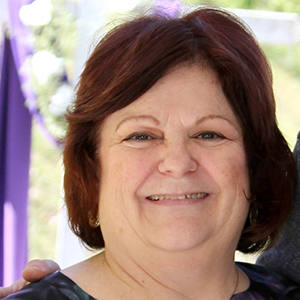In this Article

Medical Billing and Coding Salary
Medical biller and coder jobs fall under the U.S. Bureau of Labor Statistics’ category of medical records specialists. The median pay for this field is $48,780 annually, according to the BLS.
Medical billers and coders are critical to how medical settings function: Without their work of translating patient care into codes and then submitting those codes to payers, doctors and nurses wouldn’t receive reimbursements.
Income varies, of course, and many factors can impact your salary. You’ll also find that the job outlook for this field is strong as demand for billers and coders is steady as healthcare organizations grow to keep up with patient needs, says the BLS.
It helps to remember that medical billing and coding are distinct functions, though workers in these fields share similar skills, and they are reimbursed differently. In general, medical coders typically earn more than billers. Some positions entail one person working as both biller and coder, though that is less common and tends to occur in small markets or small medical settings.
What Factors Can Affect a Medical Coder’s Salary?
While the median salary for medical records specialists—a category that includes medical billers and coders—is just over $48,500 a year, pay may vary depending upon several factors, including where you work and live, how much experience you have, what certifications you have earned, and your level of education.
Where You Live
You know that real estate adage, “Location is everything”? When it comes to salaries for medical billers and coders, where you live and work isn’t everything, but it does have an impact.
When you break it down, the variance in pay according to location is due to a handful of reasons. First, the cost of living depends on where you live. Population—and therefore the concentration of people who need medical care—can also impact how much healthcare organizations are able to pay.
The West Coast (including Hawaii and Alaska) offers the highest median salaries for medical records and health information specialists according to BLS data, which includes billers and coders. The region that includes Alabama, Kentucky, Missouri, and Tennessee has the lowest median salaries for these positions.
In general, jobs in cities pay better than jobs in rural areas. Among metropolitan areas, salaries vary.
Wondering which cities pay the best? You might be surprised. Check out this salary data.
Find out what your salary could be as a medical biller and coder in your state
Learn what you may be able to earn in your state, how the cost of living and other factors could impact your pay, why education matters, and much more.
Where You Work
Even though the responsibilities and day-to-day work is similar for billers and coders no matter where they work, the type of work setting influences how much you are paid. After all, as a biller or coder, you may be qualified to work in all sorts of healthcare facilities. (Remember, you’ll need to tailor your education depending on where you want to work, since coding systems vary among healthcare settings.)
Insurance agencies tend to pay billers and coders the most. Medical and surgical hospitals salaries are around the middle of the pack. Median salaries are lowest in physician’s offices and outpatient care centers, according to the BLS.
Keep in mind that some medical billers and coders work from home. These positions can either be remote jobs for employers such as a hospital or clinic, working for an independent company that serves healthcare facilities, or as an independent contractor who works directly with healthcare organizations. Pay in these work-from-home environments may not directly match overall trends.
Before you make the leap to working from home, investigate how much others make doing the same thing in your area.
Your Certifications
Earning certifications and credentials influence your pay in several ways. First of all, they provide evidence of your skills, potentially making you an attractive candidate. “If you have coding credentials, that looks good on your resume,” explains Robyn Korn, MBA, RHIA, CPHQ, an adjunct instructor of medical coding at Purdue University Global. “They show you have a knowledge base employers are looking for, making them more likely to consider you.”
Secondly, certifications and credentials may be able to help move you up the pay scale, no matter the salary you started at.
Some credentials are very specific and demonstrate your ability to fill niche positions. For example, certifications in ophthalmology or gastroenterology are incredibly specialized, and not many coders earn these credentials. That usually translates into higher pay for positions that require this niche training and education.
Your Pay Structure
When you’re hired as a medical biller, medical coder, or both jobs, you may be paid as an hourly (non-exempt) employee or salaried (exempt) employee. When you work hourly, you will need to clock in and out to accurately log your hours.
Overall, coders and billers who work more than 40 hours a week are paid more—no surprise there. Some of this increase comes from hourly workers who earn overtime, which is often 1.5 times the hourly rate.
Employers prefer to avoid paying overtime, though, so this scenario is more likely to play out when an organization is struggling to hire enough billers and coders to fulfill needs.
Some billers and coders with salaried positions work more than 40 hours. Workplaces that have the expectation that salaried employees will put in more than 40 hours a week may compensate accordingly by offering a higher salary.
Independent billers and coders, and those who work for outsourcing companies that serve healthcare organizations, may be paid differently. Other common pay structures include per-case or per-claim or a set percentage of the amount you claim.
How Can I Earn More as a Medical Coder?
You can’t control some things that impact your pay: For example, you can’t fast forward in time so you suddenly have more experience. That said, billers and coders can take steps within their power to earn more.
Most important is to be thoughtful and strategic about which steps you take—and in what direction.
Not long ago, several people on Korn’s staff wanted to advance their careers, so they started a coding program. The problem: The program didn’t focus on the type of skills needed to grow their career in the way they wanted. “A program or certification only takes you where you want to go if it aligns with your goals,” Korn explains.
- Education:
- More education generally translates to a higher income. Can you take classes part time to earn an associate or bachelor’s degree? You can increase your earning potential by studying online or in person.
- Certification:
- Medical coders who have a basic credential, such as a Certified Professional Coder (CPC), generally earn more than those who have finished a training program but haven’t sat for a certification exam. You can also “stack” certifications, adding more throughout your career to potentially increase your pay.
- Networking:
- “When you network with other professionals in the field, you open yourself up to advance your career,” Korn says.
Job Growth and Outlook
The career outlook for medical billing and coding is promising: Employment in this field is projected to grow at 8.5% through 2032, just above the national average of 5% for all jobs.
The BLS says an aging population is partly driving the demand for medical billers and coders. As patients age and live longer and with more chronic illnesses, health care organizations likewise need to grow to accommodate these changes. Facilities will need medical coders and billers to ensure they are properly reimbursed for this uptick in care.
Korn notes a trend of increasing use of electronic coding systems and auditing software. These tools are unlikely to fully replace professionals, though. An experienced biller and coder will likely be needed to manage the huge stream of electronic information, ensure the correct codes are used, and ensure an efficient flow of revenue.
Resources
The American Academy of Professional Coders (AAPC) offers ongoing education and workshops, professional networking, and certifications. “The AAPC focuses more on coding in physicians’ offices and clinics,” Korn says, so this is a particularly important resource if you’re interested in those settings.
The American Health Information Management Association (AHIMA) provides certifications, education, conferences, and advocacy. “If you’re not sure what setting appeals to you, you can rely on AHIMA because it gives you exposure to both physicians’ offices in addition to hospitals,” Korn says.

Written and reported by:
Catherine Ryan Gregory
Contributing writer

With professional insight from:
Robyn Korn, MBA, RHIA, CPHQ
Adjunct Instructor of Medical Coding, Purdue University Global